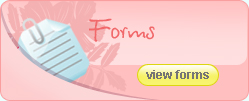Treat the Spring Allergies
Pollen counts rise with the warm weather and sunshine. If you have not previously started your preventive medication (e.g. Fluticasone nasal spray, Zaditor Eye Drops); this would be a good time to start them. Please start right away. This is another year we want to be proactive to reduce allergy symptoms. These symptoms can be confused with COVID and are very difficult to tell apart. It is very difficult to tell the difference and most often results in a COVID test to continue in school or daycare. Although fever can make a virus more evident, most viruses do not cause a fever. Here in the northeast, we have 3 pollen seasons:
- Tree Pollen – April to May
- Grass Pollen – June to August
- Ragweed – August to September
Some have symptoms for all 3 pollens, while others are sensitive to only 1 or 2 pollens
Symptoms of allergies:
- Eyes – itching, watery
- Nose – itching, runny nose, stuffy nose
- Throat – itching, dry
- Chest – Cough
Some children have symptoms that involve only the eyes, some only the nose and some have symptoms in all 3 areas.
Monitoring:
Consider using an app or a website. Pollen.com has an excellent website. You can add you email to be sent updates when the pollen is high.
Diagnosis
Symptoms of allergies can manifest as eye symptoms (allergic conjunctivitis) or the nose (allergic rhinitis). Symptoms noted above appear with exposure to the pollen and disappear upon removal. History alone is sufficient to diagnose allergies. Allergy testing is available and accurate 70-80% of the time. For many people testing is not necessary, but can be helpful.
Treatment
The goal of treatment is symptom improvement. Pollen allergies cannot be cured, but life can be made much more functional with today’s treatment options.
Prevention: In the bedroom keep the windows closed. This will prevent pollen from coming into the bedroom and landing on the bed. We spend more time in the bedroom than any other room in our house, so prevention here is important. A room air conditioner is helpful, or use a fan in the doorway to circulate air in the room. Central AC is even more helpful. If it is cool outside, you can run the fan only to pull in cool air from the outside. There are many filters available which remove pollen from the air filtered. Remember to replace them per manufacturer’s recommendations. Pollen counts are highest during early morning and evening hours. If you go out during these times, consider a shower to wash off the pollen. At the least, rinsing your face and eyebrows will remove surface pollen. Sinus Rinses: Consider using a NeilMed Sinus Rinse or NediPot. Dust Mites Prevention: dust prevention measures – focusing on the bedroom can help. Cover mattress, pillow. If severe removing the carpet and other bedroom dust catchers can help.
Medications: For general symptoms: Taking an anti-histamine can also reduce symptoms. Anti-histamines are very safe. One issue is tolerance. This develops when you are using a medication EVERY DAY for over a month. You can prevent tolerance from occurring by switching antihistamines once a month (e.g. switch back and forth between loratidine (Claritin) and cetirizine (Zrytec). These medications will not take away all the symptoms, but improve the ability to function. Dosing is as follows:
ZYRTEC dosing (generic is cetirizine):
1) 6 months to 2 years: 2.5 mg (1/2 tsp of 5 mg/5ml) once a day.
2) 2-5 years: 2.5 mg, and if needed you may increase to 5 mg once a day.
3) 6 years and up: 5-10 mg once a day as needed.
CLARITIN dosing (generic is loratidine):
1) 2-5 years: 5 mg once a day
2) 6 years and up 5-10 mg once a day.
For Allergic Conjunctivitis (eye allergies): Rinse the eyes with cool water after being outside during high pollen counts. You may use a prescription to treat this (most effective). Alternatively, you may use ketotifen (generic branded as Zaditor).
« Go Back Print
Read Past Newsletters
Print
Read Past Newsletters










